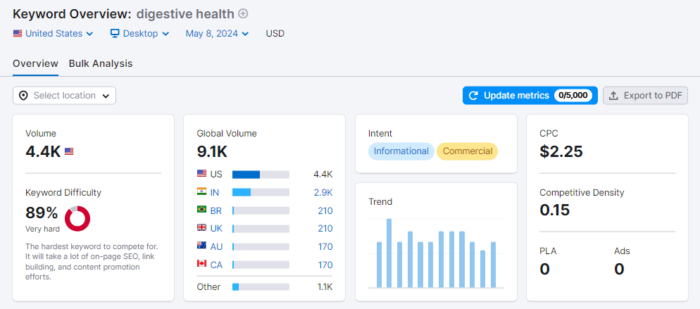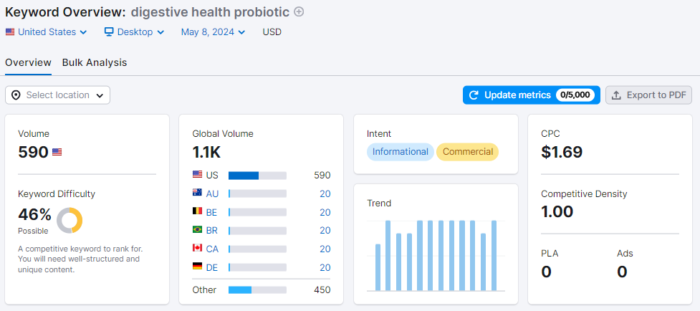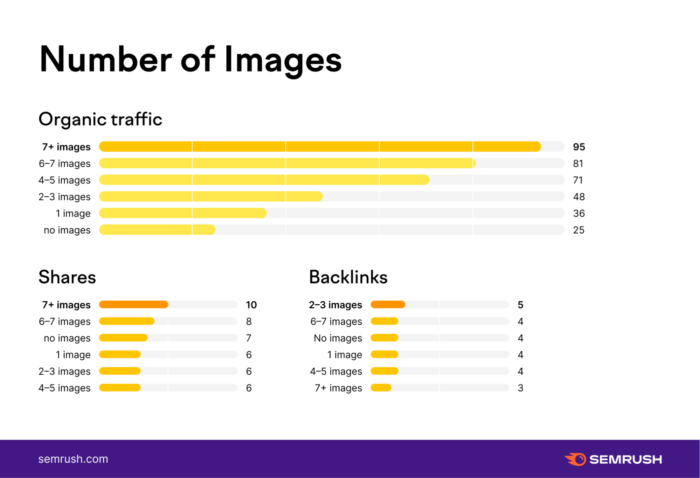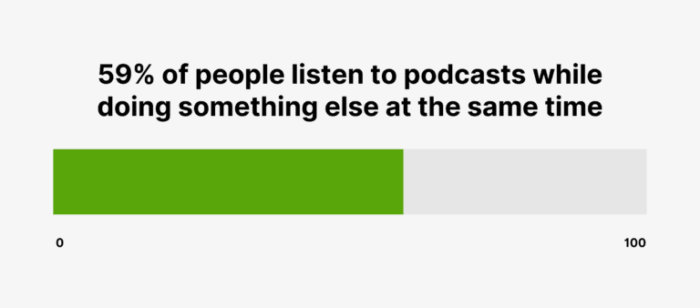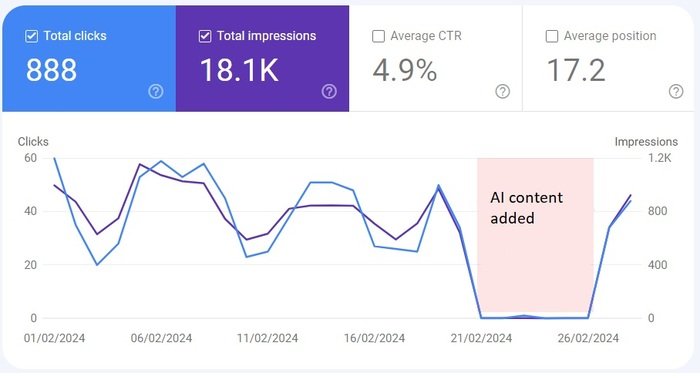Beyond Keywords: Content Optimization Strategies for Maximum Impact
You can revive old content from the dead.
I’ve successfully revised and rewritten old content that others thought belonged in the grave.
All it took was a few simple tweaks to improve the content’s relevance and it was back to ranking in the search engine results pages.
The secret? Implementing tried, true, and tested content optimization strategies.
As with any marketing effort, content marketing requires careful thought, planning, and execution. Without a solid strategy in place, businesses risk investing funds that they don’t see a return on.
Consider the time and effort it takes to produce one blog post. There’s the research phase, which can grow exponentially in length if the author is unfamiliar with the content.
Then there’s the outlining phase followed by the writing phase. Lastly, the content must be edited for accuracy, grammar, and tone of voice. A single blog post can take a writer an entire day to produce when all is said and done.
If your content isn’t well optimized, it risks not appearing near the top of the search results pages and won’t reach the intended audience. In turn, the effort exerted into creating the blog post is futile, resulting in a waste of time and money.
How can you produce higher-performing content? The answer is simple: content optimization.
And UNmiss’s myriad content optimization tools are all available to you for use for free.
What is Content Optimization?
Content optimization is often confused with search engine optimization (SEO). Most non-marketers assume the point of creating content is to have it be seen by customers. This entails SEO to ensure search engines see the content favorably and rank it prominently for maximum exposure.
However, content optimization goes beyond the SEO basics, but rather involves the process of refining and enhancing content to provide the most benefit to users.
At the end of the day, attracting your readers is vastly more important than attracting search engines.
Yes, you still need to adhere to SEO basics, however, content is moving away from keyword stuffing and poor backlinks. Instead, it’s veering towards a customer-first approach where every piece of content written is relevant, readable, and helps the consumer solve a problem.
Why Is It Important to Optimize Content?
If no one is seeing your content then your content marketing efforts aren’t worthwhile.
Content optimization helps drive qualified traffic and guides them through the customer journey. For example, let’s say you spent an ample amount of time creating a long-form guide related to your product or service.
A few months have gone by (plenty of time for crawlers to find and index your content) and your content is receiving little to no traffic. This is likely because your content hasn’t been properly optimized.
You might have the most succinct, helpful article yet not be reaching the right audience, getting lost in a sea of content in the search engine results pages (SERPs), or the search engines simply can’t find it.
You’ve ended up spending time paying a writer to draft the content and an SEO manager to upload the content to your site. You may have also spent money distributing the content through paid means such as ad promotion or third-party website placement.
Make every dollar you spend strategic by ensuring you weave your content optimization and SEO efforts together. By blending the two you’ll be better able to achieve your overarching marketing goals, drive more traffic to your website, and improve user engagement.
Content Optimization Strategies
We recently conducted a study where we looked at over 13 million web pages using Ahrefs’ Content Explorer tool to determine what’s currently propelling certain web pages higher in the SERPs. From our research, we concluded that:
- Keyword research is a must to find the right terms to target
- Higher domain authority scores help a website rank more favorably
- Outbound linking continues to be an important search engine ranking factor
- Social sharing also contributes to higher search visibility
- Longer-form content is often needed to rank for high-competition keywords
- SEO professionals believe that content optimization and strategy is the #1 most effective SEO strategy
As evidenced by our research, several content optimization strategies can help improve search rankings. Let’s dive into our top 6 to help you refine where you need to and want to focus your content optimization efforts.
1. Right Topics = Right Audience
You should know why your customers seek out the solution your business offers. It’s essential to uncover the questions your users are asking related to your seed keyword to ensure you address it throughout your copy. This ensures you’re matching user search intent and providing a relevant user experience.
To start, it’s important to target keywords that are low in difficulty and high in search volume whenever possible. This ensures you’re writing content that can potentially rank in the SERPs, especially if your site’s domain authority isn’t as high as your competitors.
For example, if a nutrition and supplement website wanted to write a blog post about supplements for digestive health. It wouldn’t be beneficial to target the keyword phrase “digestive health” because according to Semrush, a prominent keyword research tool, this is The hardest keyword to compete for.
It will take a lot of on-page SEO, link-building, and content promotion efforts. Although that keyword phrase has commercial intent, it would be very hard to rank for.
Screenshot from Semrush
Instead, the company would benefit by targeting a keyword phrase like “digestive health probiotic” and writing content around this topic. This keyword also has commercial search intent; however, it will be much easier to rank for with well-structured and differentiated content.
Screenshot from Semrush
2. Add Engaging Content
Users are being drawn to content that strays away from the text-based norm. They are interested in watching videos, engaging with interactive polls, and scrolling down an infographic.
Research shows that content with images receives 94% more views than content without any images, and videos can increase conversion rates by 80%.
Visuals can go a long way in terms of increasing engagement, keeping visitors onsite longer, and reducing bounce rates. Take the time to add visuals and videos where it makes sense throughout your content. Visuals also help break up content, helping guide and encourage users to read through the entirety of your article.
When considering how many images to include in your content, a global content marketing study conducted by Semrush found that articles with seven or more images receive 116% more organic traffic than those that don’t have any.
The same study also found that articles with at least one video receive 83% more traffic, and articles with three videos or more receive 55% more backlinks.
Podcasts are another unique and beneficial content opportunity. Consumers find themselves having less free time to consume content with work and all the other external factors taking up time. With podcasts, listeners can tune in at any time of the day, enabling consumption at their own leisure.
Studies have found 59% of people listen to podcasts while multitasking, 32% listen while they’re in the car, and 59% consume podcasts while they’re at home.
Podcasting enables your brand to create a deeper, more personal connection with your audience by allowing listeners to become familiar with the podcast host and all their distinct nuances such as their storytelling style, personality, and more.
Podcasting is a highly successful content marketing tactic, with over 50% of marketers already leveraging podcasts to reach their target audience. Podcasting is still in its adoption phase which leaves plenty of room for your business to get on board to boost brand growth, add a new type of content for your audience, and improve awareness.
3. Write Good Content
Perhaps the most straightforward way to optimize your content is to write good content. As for what Google deems to be great content, look no further than the E-E-A-T principle, which stands for expertise, experience, authoritativeness, and trustworthiness.
“Information Gain” is another factor Google has looked for with recent core updates. In short, if you add information that is not available on Google yet (from your expertise, thoughts or experiments), it differentiates your article from the rest of the results. AI can’t reproduce this type of originality as it essentially rewrites what already exists on the internet.
By ensuring your content meets each of these principles, you are better able to improve how quickly and highly the content ranks.
To ensure your content meets and exceeds Google’s guidelines, it’s crucial to find a writer who is well-versed in the topic. When the writer understands the topic, they’re better able to convey a sense of trust, credibility, and authority to the target audience.
If they don’t understand the topic, they will often produce unoriginal or duplicated content that closely mirrors the words of existing content. Originality and uniqueness are the name of the game in terms of content production.
Additionally, writers who need extra guidance around a topic may turn to a Generative AI tool for answers. These answers may be translated into the content, closely mirroring the tool’s response.
While Google hasn’t come outright and said they penalize AI-generated content, there is plenty of evidence to suggest the damaging effects of content written solely by AI. One study found that their page traffic drastically dropped when they implemented content written by AI.
Based on this study one thing is clear; Google still wants original content creation written by humans for humans.
4. Add and Update Existing Content
Customers often become accustomed to a consistent schedule of content publishing. If and when this schedule is disrupted, it can create a negative user experience and damage brand perception.
It’s integral to create and maintain a consistent content calendar, ensuring your team has the bandwidth to produce content at a regular, established cadence. Fresh, new content also impacts your search visibility.
Google and other popular search engines rely on web crawlers to find content that exists on your site. The more often you’re producing high-quality, relevant content the more frequently a crawler will scan your site.
Consider that you shouldn’t produce a large volume of content to attract search engines. Every piece of content should provide value to your audience and be created with intention, purpose, and goals.
A steady, consistent stream of content encourages return visitors.
When users come to expect a new blog post every week and they’ve enjoyed reading your existing content, they’re likely to come back for more. This helps keep visitors engaged with your business, improving the probability of purchase and conversions.
New content also allows for you to target new keywords, allowing the possibility for you to attract more visitors and become a trailblazer in your industry. This also helps search engines understand the intent of your website and helps you be seen as a trusted resource worthy of promoting higher in the SERPs.
In addition to new content, it’s crucial to revisit and update older content as well. With the rapid shifts in consumer behavior, technology, and trends, content can become quickly outdated.
When readers are presented with outdated, irrelevant content, they’re less likely to spend time on the page or click through to see more.
Updating old content frequently not only benefits your readers but also search engines too.
When Google sees that you’ve updated your content, it signals that it has fresh, new content to index. In turn, this triggers Google to see your site as a reputable and credible force for producing and providing relevant content to your readers.
Any time you update your content be sure to change the publish date to the new date you’re publishing the updated content.
Sample WordPress post date update example
5. Optimize Your Title Tag and Meta Description
Your title tag and meta description appear prominently and clearly on the SERPs. They’re also the first thing searchers will see when they find your website, which is why it’s crucial to ensure both accurately convey what the users can expect once they click through.
Here are a few strategies to attract attention with your title tag and meta description to compel users to click through:
- Accuracy: Ensure your page title and meta description align with the content on your landing page. Avoid bait and switching your readers with content that doesn’t match.
- Keep it Succinct: Your title should include your focus keyword in a natural way and get to the point quickly. Meta descriptions usually only allow for around 156 characters, which forces you to condense your copy. Anything longer will be cut off.
- Make it Catchy: Most websites will write a sentence about what readers can expect to learn in the article. You can differentiate yourself from the competition by including the most interesting takeaway or a specific data point in the meta description.
- Avoid Duplicates: Don’t duplicate your meta descriptions as search engines may flag this as unoriginal content, therefore lowering your search ranking potential.
- Add a Call-to-Action: Entice the reader to perform a desired action by adding a call-to-action (CTA) at the end of your meta description, such as book a demo or call us today.
6. On-Page Optimization
Your content may flow seamlessly and provide an abundance of useful information, but if on-page elements aren’t optimized, you risk this content never being seen.
Numerous on-page factors affect content’s ranking potential. Some of these factors include:
- Adding H2 and H3 tags where appropriate to break up the content
- Using bullet points
- Adding image alt tags
- Linking to other pages on your website where appropriate
- Linking to other third-party websites
- Keeping paragraphs short and concise
- Adding a table of contents for long-form content
- Add images and videos
- Use bold font to call out important information
- Use short sentences
- Check for grammar and spelling errors
There are a multitude of ways to keep your content interesting, attractive, and click-worthy. Free tools like Grammarly can often provide suggestions to improve the quality of your content. They can also identify ways to improve clarity and flow. Additionally, Grammarly offers a browser extension to see mistakes and areas for improvement in real time as you write.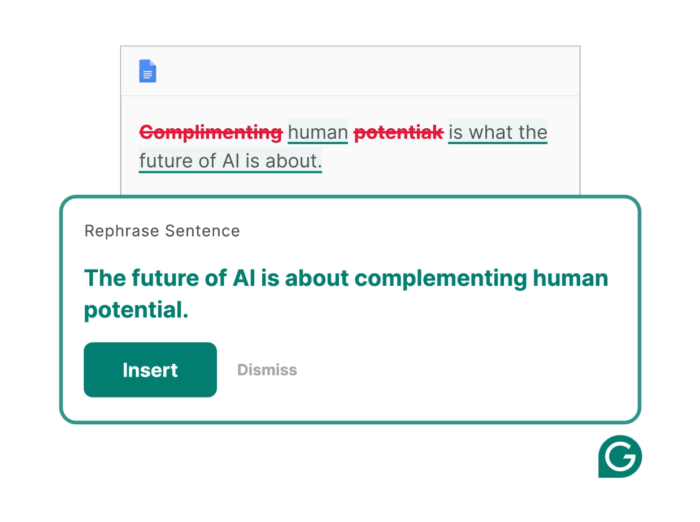
Grammarly example
Putting It All Together
The race for results is fierce, and subpar content no longer wins. Businesses must leverage content optimization strategies to stay ahead of the game and provide an exceptional user experience.
As highlighted throughout this article, effective content optimization strategies are more than just creating content, slapping a title on it, and uploading it to your website. It requires a strategic approach to ensure you’re maximizing your investment and seeing long-term results.
We’ve also seen that content optimization isn’t a one-size-fits-all effort. Content must constantly be revisited to ensure accuracy and relevancy. Consumer interest, opinions, and attitudes frequently change which necessitates content changes too.
Whether it’s performing frequent competitive research, mining for common questions potential customers are asking, or taking advantage of emerging content types, thriving businesses stay one step ahead; anticipating customer’s next moves and motivations.
Continue to refine and adapt your content to stay ahead of the curve. Always keep your customers at the core of your content optimization strategies.
Customers are the heart of your business and their needs must come first in all your marketing endeavors, including content optimization.



